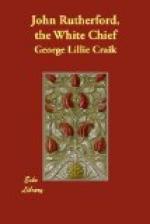We have been favoured with a communication upon this subject by a gentleman who has given much attention to it, which seems to explain, in a very satisfactory manner, the true reason of the failure that has been here experienced. “A friend of mine,” says our correspondent, “a few years ago imported a quantity of the phormium, in the expectation that it would answer admirably for making cloth even of the finest fabric. But in this he was altogether disappointed. Although it is infinitely stronger in its raw state than any other flax or hemp, yet when boiled with potash it becomes so exceedingly weak as not to bear the operation of weaving but with the utmost difficulty. A gentleman once showed me a pair of trousers made of this material. They appeared quite rough and nearly worn out, though they had been used but for a few weeks.
“Although making cloth of it, however, is out of the question, it is admirably fitted for rope and twine of all descriptions. It will, therefore, prove highly valuable to our shipping and fishing interests. Another friend of mine made some rope of it, which, when proved by the breaking machine, bore, I think, nearly double the strain of a similar-sized rope made of Russian hemp. The great strength and tenacity of the New Zealand flax appears to me to be owing to the fibres, though naturally short, being firmly united by an elastic vegetable glue or gum, which the boiling process dissolves.” Rutherford says the flax becomes black on being soaked, which may possibly be occasioned by its consequent loss of the gum here described.
We find it stated in the “Annual Register” for 1819, that about the beginning of that year a favourable report had been made of the suitableness of the phormium for the manufacture both of small and large ropes, after some experiments in the dockyard at Portsmouth. The ropes turned out strong, pliable, and very silky. The notice adds that the plant may be cut down in New Zealand three times a year; and that it may be imported to this country at the rate of about eight pounds per ton, or one-seventh of the cost of hemp.
Among the useful plants for which we are indebted to New Zealand, we must not forget their summer spinach (Tetragonia expansa—Murray), which was discovered on Cook’s first voyage by Sir Joseph Banks, and was “boiled and eaten as greens” by the crew. It was afterwards seen by Forster at Tongataboo, though it was not used by the natives; but Thunberg found the Japanese acquainted with its value as a pot-herb. It was introduced into Kew Gardens in 1772; but the first account of it as a vegetable worthy of cultivation, was published by Count D’Auraches in the “Annales d’Agriculture” for 1809. Its chief advantage lies in the leaves being fit for use during the summer, even in the driest weather, up to the setting in of the frosts, when the common spinach is useless; but it is not reckoned of so fine a flavour as that plant. The Rev. J. Bransby says that the produce of three seeds, which must be reared by heat before planting out, supplied his own table and those of two of his friends from June till the frost killed it.




